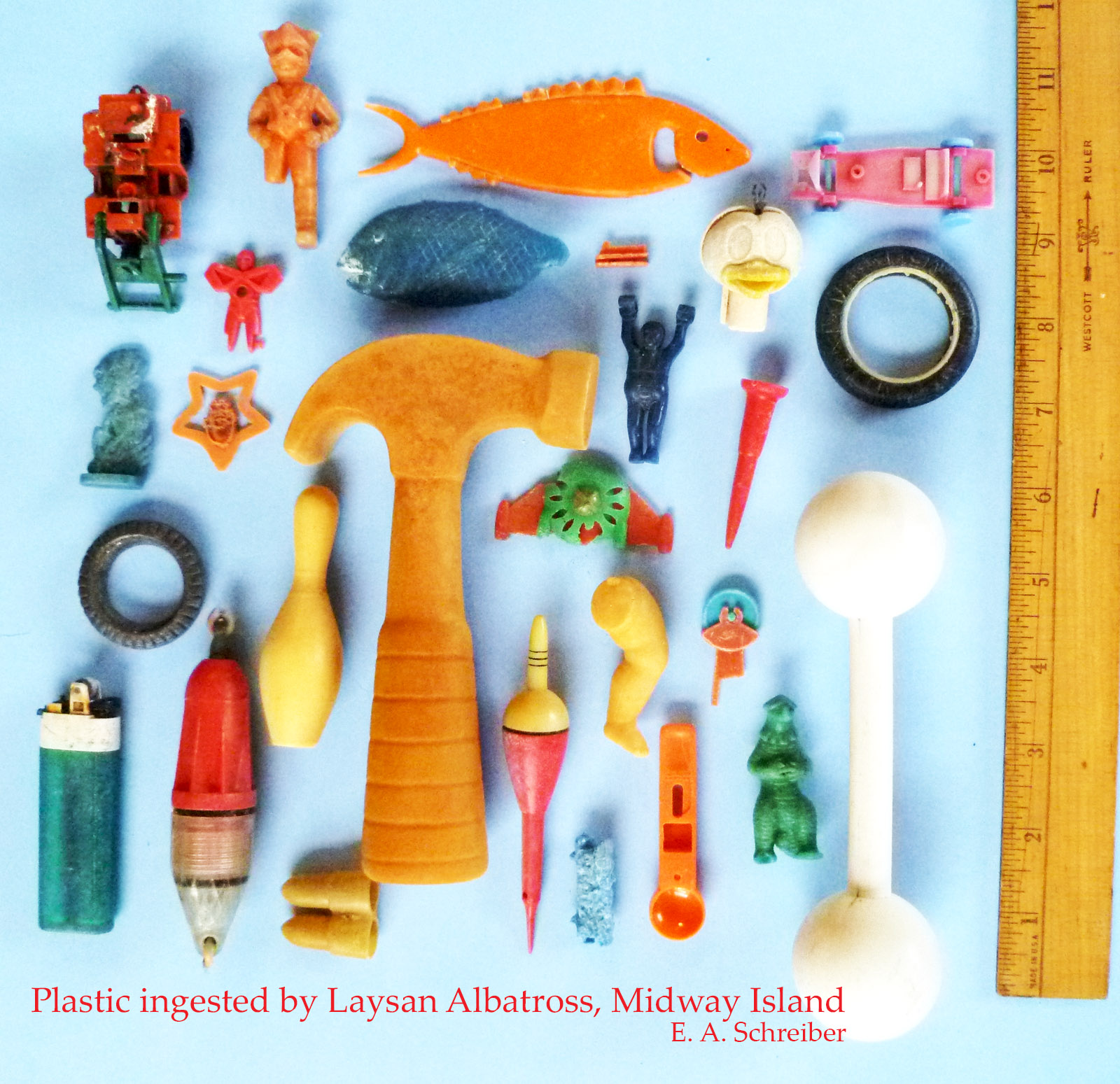
Photograph from the 1980s by Betty Anne Schreiber. Read more of her and other ingested plastic artwork and displays here
Marcela Uhart (Latin America Program, Karen C. Drayer Wildlife Health Center, School of Veterinary Medicine, University of California, Davis, USA), Luciana Gallo and Patricia Pereira Serafini have produced advice in the ACAP Guidelines series on assessing plastic ingestion by ACAP-listed species.
“During the Ninth Meeting of the ACAP Advisory Committee (AC9), the Population and Conservation Status Working Group (PaCSWG) noted the widespread intrusion of both macro- and microplastic in the diet and environment of seabirds and expressed concern about forecasts that this will increase. … The PaCSWG agreed that ACAP could contribute to this topic through various actions. One such action is the production of guidelines to assess the incidence of plastic ingestion in ACAP species. Thus, during PaCSWG4 and PaCSWG5 we provided a draft set of guidelines for consideration of the working group. Comments and recommendations have been incorporated in the current revised sampling guidelines to assess plastic ingestion (macro and microplastics as well as additives and adsorbed chemical compounds) with an array of sample type choices from live and dead birds and/or their immediate environment that should facilitate collection in diverse settings. Although we focus on albatross and petrel species, these guidelines and recommendations are generalizable to other taxa.”
The guidelines’ summary follows:
“These guidelines provide a standardized approach for sampling ACAP species to assess plastic ingestion (macro and microplastics, as well as chemical compounds) with an array of sample type choices that should enable collection in diverse settings. Samples can be collected from dead beached or by-caught specimens, live and dead animals in breeding sites or rehabilitation centres, as well as non-invasively by sampling fresh scats from nests, regurgitated boluses or unviable or hatched eggs. Given the particular susceptibility of ACAP species to plastic ingestion and the increasing prevalence of this problem worldwide, collecting samples to assess plastic ingestion should be considered whenever an opportunity presents. Using standardized protocols increases the consistency and representativeness of results and allows comparisons between species and detection of large-scale spatiotemporal patterns. Target research and surveillance options include:
1. Macroplastics (>5mm): can be assessed from stomach contents in dead birds, regurgitates in live birds, and boluses.
2. Microplastics (<5mm): can be assessed from gastrointestinal contents in dead birds, live-bird regurgitates, faeces/guano and boluses.
3. Plastic-derived chemicals (additives): can be assessed in tissues/organs (e.g. liver, muscle, fat) in dead birds, and preen gland oil, stomach oil and plastic items recovered from live and/or dead birds. Additives can also be found in hatched and/or unviable eggs.
4. Plastic-adsorbed organic contaminants (e.g. PCBs -polychlorinated biphenyls- and POCs -organochlorine pesticides-): can be assessed in plastic items found in the gastrointestinal tract of dead birds or regurgitates in live birds.
More ACAP Guidelines documents may be found here.
Reference:
Uhart, M., Gallo, L. & Pereira Serafini, P. 2020. Sampling guidelines to assess plastic ingestion in ACAP species. Agreement on the Conservation of Albatrosses and Petrels. 21 pp.
John Cooper, ACAP Information Officer, 14 September 2020

 Français
Français  English
English  Español
Español